Joyce T. Strand's Blog, page 32
October 8, 2012
What the Experts Say: Interview with Author Stacy Eaton
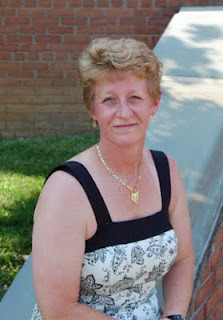 Stacy Eaton, Author
Stacy Eaton, AuthorWhether I'll Live or Die
Welcome today to Stacy Eaton, author and full-time Police Officer. Stacy draws on her police experience and other sources to make her books credible and lifelike. The first novel of her paranormal series—My Blood Runs Blue—combines the world of law enforcement with the paranormal world of vampires. Today she is here to talk primarily about Whether I’ll Live or Die, her recently published novel about a young woman coping with domestic violence.
Q: You are a very active person. In addition to writing, you juggle a full time challenging job, a family, and a business to help people promote their causes. When you’re not writing or working, what do you do?
Stacy Eaton: Work and then do some more work, lol… Being a full time police officer has a lot of demands on my life and the hours I have available. So let’s take that out of the equation and then think about what I do. I spend time with my family; I chat with friends online, hit one of my local watering holes for a drink with friends and spend as much of my quiet time as I can reading. I love to read.
When I am out and about, one of my favorite things to do is look for an awesome picture. I love photography. It has been a passion for me for many years, first starting out with black and white film where I developed it in my own dark room, and now with technology I take tons of digital pics with my Nikon SLR camera. My favorite subjects are nature scenes or my two Shiloh Shepherd dogs, Garda and Callie.
Q: What inspired you to write your book, Whether I’ll Live or Die?
Stacy Eaton: I have seen Domestic Violence in my life, many times over. Not just in my job as a police officer, but also in my private life. I have a passion to help get the awareness out about it, and make it something that people are aware of. It needs to get out from behind closed doors where the silence reigns and out in the public so that people can understand the horror that is associated with it.
Whether I’ll Live or Die brings about the views of Domestic Violence in a very intense and emotional plotline. You follow Amanda through years of abuse while at the same time you see Officer Nicole Nolan dealing with the effects of abuse in the legal system. Together they bring about different emotions, weaknesses and strengths that will ultimately lead to a final showdown.
This book was not intended to be a simple easy read. It was intended to make the reader think, make them feel and make them wonder.
Q: Where do you get your ideas for your writing?
Stacy Eaton: Life inspires me and gives me the ideas for what I write. I see a lot in my law enforcement career that inspires a lot of ideas, not just the bad, but the good in people too. Sometimes they have nothing to do with my career, but many times they are from something I have witnessed, something I have come upon and had to stop and think about.
My paranormal series, My Blood Runs Blue, was inspired by seeing eyes in the woods late one night. My contemporary romance novel idea came after I attended a week long bomb/explosive training class. My angel series is inspired by knowing that there are times when there has to be a Guardian Angel looking over my shoulder to protect me and guide me at work some days. I keep my eyes and my mind open and watch for the things around me to help guide me, to help me create the stories I write.
Q: What tips would you give to others considering a career in writing?
Stacy Eaton: Do not take reviews personally. Make sure that you have your work edited professionally, and let your heart shine through in your words.
A writer puts love and detail into their work. They want people to like it and read it. One of the most important things to achieve this is to find a good editor. Whether you are just doing grammar editing or you are having someone do developmental editing, it will make all the difference in the world. You might say to yourself that you can edit your own work, but I guarantee you won’t find all the little errors, you are so close to your story that you will miss out on the little things that first time readers will see.
As for reviews – some authors don’t really look at reviews, others fawn over them. Personally, I look at them once in a while and take them in. If I get a less then glowing review, I suck it up. I read what they have to say – I try to understand where they are coming from and then I try to figure out if there is something in what they said that can help me with my next book. I know some authors that get very bent out of shape with negative reviews, but you can’t do that. We don’t all like chocolate ice cream, so why would all readers like one book?
Q: What does freedom mean to your characters?
Whether I’ll Live or Die is a story about Domestic Violence. Amanda is a young woman who moves from one abusive relationship to another always trying to find the freedom to love someone without being abused in one way or another.
A victim of Domestic Violence can sometimes take years, or even a life time, hoping and dreaming of being free. Sometimes there is a high price for this, but like most things in life, being free is the ultimate goal for them. To live in a world where they are not mentally chastised, sexually abused, controlled, struck, talked down to or ultimately killed, is what most victims dream of.
I want to take this opportunity to thank you so much for allowing me to visit with you here today! It has been a pleasure to be here and visit with your readers.
Q: No – thank YOU, Stacy. It has been an honor to host you. Stay safe and keep writing.
And speaking of “free” …
 Click here for connection
Click here for connectionMore on Whether I'll Live or Die, Stacy Eaton, and Links
Whether I’ll Live or Die
“It sounded so simple in theory; ready... aim... fire... but what actually transpired was so much more.”
Officer Nicole Nolan holds the gun steady in her hands, knowing that life will be forever altered once she pulls the trigger. Her position as a small town police officer is to protect those who cannot protect themselves. It is her job, her career and her life.
Amanda stands where protection does not exist. With several failed relationships behind her, Amanda turns a blind eye to the possessiveness Josh displays in order to sooth her desperate need to be loved. As the mental abuse turns violent, Amanda must deal with the denial and embarrassment of being a victim once again. With her emotional and physical health siting on the edge, she must fight to regain control of her life.
A gripping story with one final destination, but will it be life or death?
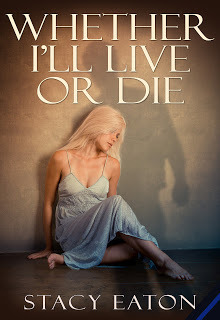
ExcerptExcerpt of Chapter 24 – Whether I’ll Live or Dieby Stacy Eaton
It wasn’t until we were on our way home that we broached the subject of my marriage again. Angie brought up a question that had been hovering around in the back of my mind most of the day. “What are you going to say to Josh?” she asked me quietly as we drove along the highway. I gazed out the window beside me, watching the scenery flash past quickly, reminding me of the memories that had crossed my mind the night before, a rapid succession of images that began to blur together if I didn’t blink. “I’m not sure,” I answered the window as I continued to view the passing world outside. “I’ll figure it out when the time comes.” Turning up the volume on the radio, Angie let it go at that. We sang to the music for the rest of the ride home. As we turned onto the street, my heart stopped when I saw his car in the driveway next to mine. “Damn,” I muttered under my breath.“You want me to go in with you?” Angie said as she pulled over in front of the house. “I can if you want me to.” I smiled, “No, that’s alright.” I thanked her for a great afternoon and for being there for me. I promised not to push her away again and stepped out of the car. I picked up the bag with the single item I had purchased in it and made my way to the front door.I didn’t take my keys out as I stepped up, figuring Josh would have left the door open when he got home. I glanced back at Angie, waved, then reached for the doorknob as she pulled away. The door swung quickly open, and I lost my balance, stumbling into the foyer. I hadn’t even recovered my balance when I felt hands push me against the wall. The door slammed shut. I cringed as the door vibrated the wall next to me.“Where the hell have you been?” Josh yelled. I turned so my back was to the wall. I could smell alcohol coming off of him and his eyes looked aggressive and glassy. “I was out shopping with Angie,” I responded meekly to his question. “Bullshit! Who were you with?” He got in my face and my knees started shaking. “I was with Angie,” I repeated quietly.His forearm immediately came to my throat, forcing my head back to the wall. I tried to turn my head to release the pressure, but he held me too tightly against the drywall. “You better not be cheating on me! Who were you with?” Spit landed on my face as he shouted. A buzzing grew in my ears as the oxygen was denied to my lungs. My heart slammed against my chest and I tried to push him away from me, but didn’t have the strength to compete with his alcohol-induced anger. “Who were you with, Amanda?” He pressed harder on my neck and I felt things moving around inside. Breathing became even more difficult. “Angie,” I squeaked out. Suddenly, he released my throat, punching a hole in the wall beside me. I cringed away from him as far as I could get, sucking air into my hot lungs, the sound of bees still in my ears. I didn’t move any further until he turned and walked away. My shoulders slumped, and I bit my lip to keep the tears back. “Where have you been?” He flopped down on the sofa and put his feet out on the coffee table. Dirt fell off his boot on to the wood. My head felt foggy, I couldn’t remember what he’d just asked me. “What?” I licked my bottom lip, tasting my own blood from biting down so hard. His boots came back to the floor, and he stood up in a swift movement. I froze for just a second as he turned to look at me, I felt like a deer in the headlights of an approaching Mack truck. He started to move, and I decided I didn’t need to be against the wall anymore. I tried to walk towards the kitchen to get away from him. He was too fast. He grabbed me by my long blond hair, yanking me to a stop. I reached up to try and release the tension he had on me. He yanked me back to him, and I smashed into his chest, almost knocking us both over.“Where the hell have you been?” he screamed at me as he twisted my hair down. I fell to my knees to ease the pressure. “We were at the mall. Josh, let go, you’re hurting me!” The pain in my head was like someone had sliced me with a knife. He twisted the long hair around his hand and yanked. I screamed and he flung me away from him. I fell to the floor and lay there, one hand touching the soft carpet under me and the other touching my head where the hair had been pulled. If I hadn’t been touching it, I would have sworn the hair had been pulled out, but the soft locks were still at my fingertips. I not only heard the sound of his boots on the floor, but I felt the vibration of them as he got closer. My body trembled. He put one knee into my back and pushed my neck down with his hand, forcing my face into the carpet. “You ever, and I mean ever, cheat on me, Amanda, and I will kill you. You got that? I swear to God if I ever see you with another man, I will kill him and then I will kill you,” his cold voice slithered over me. I had never heard such venom come from him. The carpet fibers dug into my cheek, my cheekbone sharing the pain with my nose. Moisture ran down my cheek as my nose began to bleed again.“You got that?” he shouted one last time and pushed down on me with his knee and hand before standing back up.I didn’t speak, only nodded my head slightly into the carpet.
About Stacy Eaton
Stacy is a full-time Police Officer who enjoys crime scene investigation above all else. She also owns a business that deals with helping people get the awareness out for the causes they care most about. She is a mother of two and her husband is also in law enforcement. She is very much into photography and carries her Nikon Digital SLR with her almost everywhere, just in case. She also has two Shiloh Shepherd dogs and loves to play catch with them.
Stacy uses her experience at work to make the stories more believable, weaving bits of crime solving knowledge into her stories of fiction to make them more lifelike. She writes using a unique style that keeps you in the minds of all the important characters. Switching back and forth from mind to mind to keep the readers aware of what each character is feeling and why they do the things they do.
Her first book, My Blood Runs Blue was the start of her writing career. It brings the world of law enforcement into the paranormal world of vampires. It is a suspenseful adult series that will keep you guessing from chapter to chapter. Book one, My Blood Runs Blue, was published April 2011 and is currently available in paperback, hardcover and e-book editions. Book two of the series, entitled Blue Blood for Life was released September 2011 and like book 1 made International Best Selling lists on Amazon very quickly. The third book of this series is in the plot and characters development stage. She is hoping to have it completed and published in the winter of 2012.
Stacy published Whether I’ll Live or Die in July 2012. It is a fictional story about a young woman named Amanda who deals with the pain and emotional issues of Domestic Violence.
Stacy is also currently working on several different novels. The first one is called Liveon. Using a similar writing style as her series, this book brings to life Detective Jacquelyn Liveon as she tries to protect a movie star who is being threatened. While this book is well on it’s way, it has been put to the side to make way for another book that she is working on.
LinksAmazonBarnes & Noble WebsiteTwitter: @StacySEatonBlog FacebookGoodreadsVideo Trailer Link to You Tube
Published on October 08, 2012 21:12
October 5, 2012
What the Experts Say: Interview with Historical Fiction Author Anna Patricio
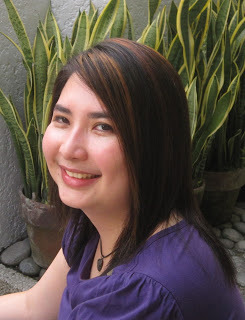 Anna Patricio, Author
Anna Patricio, AuthorASENETH
Ancient history author Anna Patricio joins us today. Anna loves ancient history -- especially that of Egypt, Israel, Greece, and Rome. That passion led her to study Ancient History at Macquarie University, Australia and to travel to Lower Egypt (specifically Cairo and the Sinai), Israel, and Jordan. We are fortunate that her enthusiasm for the subject resulted in ASENETH - a novel about a fisherman's daughter in ancient Egypt kidnapped and forced to live as a slave.
Joyce: Thank you so much for joining us today. How did you initially become interested in historical Egypt and writing about it? What inspires you to write in the historical fiction genre?
Anna Patricio: I owe my love for history to a teacher I had back in high school. Before that, I actually did not like history at all. I thought it was dreadfully boring. This teacher, however, was like a storyteller. She made history come alive. At times, I felt like I was actually there. I guess somewhere along the way, she subconsciously influenced me.
Soon, I was reading about history for leisure. And I guess it is because she taught me mostly ancient history that I gravitated towards that particular era. Aside from Ancient Egypt though, I also love Ancient Israel, Greece and Rome. I hope to get better acquainted with the Near East in the future.
As for writing about it—well to be honest, when I wrote Asenath, it was my interest in the story of Joseph that drove me rather than the historical setting. But of course, one thing led to another, and I eventually grew interested in the latter factor—writing an Ancient Egyptian novel, I mean.
I loved writing a novel with an ancient Egyptian setting so much that I’ve decided to make my second novel Egyptian themed as well. I have a lot of fun envisioning the palaces, the gardens, the temples - how they all might have looked like originally, in their prime. It’s also a lot of fun describing the people and their costuming, especially their awesome style of wearing eyeliner! Ancient Egypt was truly one of a kind.
I guess I also like writing historical fiction because it allows me to travel to another time and place. If I wrote contemporary, I’d be visualizing about things and people I see everyday. Not that there’s anything wrong with it of course – maybe in the future I could be trying my hand at it (one never knows). But for now, in my personal writing adventure, I like to travel to some place different.
Possibly I would not have thought of indulging in historical fiction if it had not been for an acquaintance who introduced me to Wilbur Smith’s River God. This happened not long after I developed my interest in history, by the way.At that time, I didn’t even know there was such a thing as historical fiction. So I didn’t know what to expect.
But I was very impressed with the novel. And I loved the opportunities historical fiction presented—how you could “humanize” larger-than-life historical people and how you could fill in the gaps where history was silent.
Then I thought, “What if I do that with my favorite Biblical story—the story of Joseph?”
Joyce: One of your reviewers cites your “memorable” characters. How do you build your characters in an historical setting? How do you make your characters engaging?
Anna Patricio: Well, I am flattered some people think so! Well obviously I have to do an amount of research to make the character fit into their historical settings. Yet, I also draw on both their strengths and weaknesses; I don’t want them to be too perfect. I also try to emphasize on the humanity of the characters—their thoughts, feelings, etc. I wanted the readers to be able to think these were people they could relate to.
Although… I guess I went a bit too far when I employed contemporary speech. This has been mentioned to me numerous times. And actually, my mentor mentioned this to me as well, but I was a bit hard-headed and paid no attention to the advice.
I also do like the readers to be drawn to a different time and place. So I promise that in my next novel, as well as a future edition of Asenath, I will make the dialogue more period drama-ish. I will, will I not?
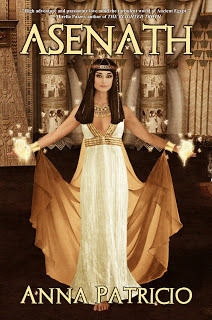
Joyce: How important is back story for historical fiction? Did you need to do much research to make the story credible and make ancient Egypt real?
Anna Patricio: Certainly. If you want a good historical novel, you must do research. In between revisions, I spent many hours in the library of my alma mater. The university I went to is known for Ancient History, so I really took advantage of their extensive collection.
I did a lot of research on the priesthood (seeing as my main character was from a priestly family), the temples, the royalty, and Egyptian daily life. I admit it may not be perfect, but I really tried to make the Ancient Egyptian atmosphere as authentic as possible.
Joyce: How do you make events, characters, and action from ancient Egypt relevant to today’s world?
Anna Patricio: Well, like I said above, I show the things everyday humans would experience--joys, sorrows, and concerns. I wanted the Ancient Egyptians in my novel to be human beings that readers could identify with, rather than grand and imposing statues or paintings.
For instance, Pharaohs are often shown as being powerhouse workaholics. And, yes, ruling a kingdom was no easy feat. But surely Pharaoh also had joys, sorrows, and arguments with, say, his close family members? Or surely sometimes, he longed to escape from the demands of Palace life and go hunting or fishing? He was human too—though he certainly didn’t think so (he thought he was a god through and through).
There are actually statues in which Pharaoh doesn’t seem to hesitate to show his sweet romantic side—he and his queen are shown with their arms around each other, for instance.
Joyce: What elements do you think are most important in creating a compelling story? Is it different in your genre from other genres?
Anna Patricio: Well, I haven’t explored other genres… yet? We’ll see though. I never know.But basically, I think the old adage follows in creating a compelling tale: “write what you know.” Cliché, perhaps, but true. At least, in my experience. I’ve tried writing about stuff I wasn’t too passionate about, but it came out looking rather mechanical.
Joyce: Who are your target readers? What do they care about most?
Anna Patricio: Well, basically anyone who loves history or romance or drama. And basically anyone who knows the story of Joseph—even better if they are enthusiasts about it, like I am. I am always interested to hear what people think of my retelling of the Joseph story.
The most common remark I’ve gotten is: “I didn’t know Joseph had a wife!” If I got a dollar every time I heard or read that…
Joyce: What do you do when you’re not writing?
Hobbies: Reading (obviously), TV or movies, photography (though I haven’t done any in ages), and spending time with my dachshund Chestnut.
Are you a dog or a cat person: A dog person, for sure. I have nothing against cats though, I just like dogs better.
Movies, TV or live theater: Either, if there’s something good.
Joyce: What advice would you give to others who are interested in pursuing a career in writing? Would you recommend self-publishing?
Anna Patricio: I haven’t tried self-publishing it yet, but I know a lot of people who do and seem pretty happy and content with it. So I suppose there’s no harm in trying. I’ve read a lot of brilliant self-published stuff.
As for advice—well, for those seeking traditional publication, I recommend you look up an agent or publisher before you query them. It was when I began researching the publication process that I realized there are so many dodgy agents and publishers out there. So be careful.
Joyce: Would you like to add anything?
Anna Patricio: To quote an Ancient Egyptian blessing: “May you always drink from the Nile.” Thank you for having me on your blog, Joyce!
ASENETH
Two Destinies...One Journey of Love
In a humble fishing village on the shores of the Nile lives Asenath, a fisherman's daughter who has everything she could want. Until her perfect world is shattered.
When a warring jungle tribe ransacks the village and kidnaps her, separating her from her parents, she is forced to live as a slave. And she begins a journey that will culminate in the meeting of a handsome and kind steward named Joseph.
Like her, Joseph was taken away from his home, and it is in him that Asenath comes to find solace…and love. But just as they are beginning to form a bond, Joseph is betrayed by his master’s wife and thrown into prison.
Anna Patricio
Anna Patricio is a lover of ancient history, with a particular interest in Egypt, Israel, Greece, and Rome. She is also intrigued by the Ancient Near East, though she has not delved too much into it but hopes to one day.
She undertook formal studies in Ancient History at Macquarie University. She focused mostly on Egyptology and Jewish-Christian Studies, alongside a couple of Greco-Roman units, and one on Archaeology. Though she knew there were very limited job openings for ancient history graduates, she pursued her degree anyway as it was something she had always been passionate about.
Then, about a year after her graduation, the idea to tackle historical fiction appeared in her head, and she began happily pounding away on her laptop. ASENATH is her first novel.
Recently, she traveled to Lower Egypt (specifically Cairo and the Sinai), Israel, and Jordan. She plans to return to Egypt soon, and see more of it. In the past, she has also been to Athens and Rome.
Anna is currently working on a second novel, which still takes place in Ancient Egypt, but hundreds of years after ASENATH.
Is Asenath doomed to a lifetime of losing everything and everyone she loves?
Links
Book purchase sites
Ebook
Paperback: Amazon, Barnes and Noble, Powells
Web page/blog
Book trailer
Goodreads Facebook
http://www.facebook.com/annapatricio.asenath
Twitter: @AnnaPatricio
Published on October 05, 2012 16:22
September 28, 2012
What the Experts Say: Writer Carl R. Brush on TURNING REAL PEOPLE INTO REAL CHARACTERS
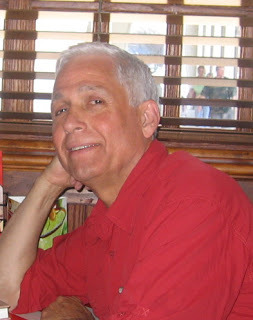 Carl R. Brush, Author
Carl R. Brush, AuthorTHE SECOND VENDETTACarl R. Brush is a writer. He just released his historical thriller, The Second Vendetta, based on real people in the pre-WWI San Francisco area. He has also published his work in The Summerset Review, Right Hand Pointing, Blazevox, Storyglossia, Feathertale, and the Kiss Machine. In the following post, he shares some tips on turning real historical people into engaging characters.
Turning Real People Into Real CharactersBy Carl R. Brush
If you write historical fiction, you’ll almost surely want to include known historical figures in your narrative. Our readers hunger not only to learn about, but to experience these people and their times with an intensity no textbook can offer. Presenting your audience with “real” characters creates a sense of authenticity that puts the reader’s imagination in the midst of the period and the scene like no other device. They’re also fun to write.
Sometimes, they’ll simply pass through, adding a bit of background and color. Your fictional family might, for example, catch sight of George Washington in a parade, but would be no more likely to meet him than you are to meet Barack Obama. Often, however, you’ll involve such characters closely in your story. In a novelized biography they’ll likely appear as protagonist, like Nell Gwynn in Gillian Bagwell’s Darling Strumpet. More often, they will take ancillary, though important, roles like Ambrose Bierce and Hiram Johnson in my The Second Vendetta.
With well-known characters such as Nell Gwynn, the world (not to mention that pesky scholar) knows so much about your subject that your task is not so much to create a story as to make what is known entertaining and absorbing and to perhaps add facts and events that are not general knowledge. (“My goodness, how interesting. I didn’t know that,” is the reaction you want from your readers.) You’re free to invent details and sparkling conversations, and you get to allow readers delicious peeks behind the curtains to find out what Charles II was “really” like, but you must hew closely to the basic facts.
Of course, you do have latitude where there is scholarly disagreement or speculation, as when Hilary Mandel in Bring Up the Bodies, decided whom to include and whom to omit in her narrative about Anne Boleyn’s supposed parade of lovers. However, your essential job is to take the body of known fact and opinion and transmute that “life” into art. You can’t have someone tomcatting around the South Seas at a time when he was supposed to be occupying the White House.
 Lesser known figures such as my Ambrose Bierce and Hiram Johnson gave me more storytelling latitude than either Bagwell or Mandel had. Many will recognize Bierce as a turn-of-the-20th-century San Francisco newspaper columnist, the author of The Devil’s Dictionary, and, perhaps, as the main character in Oakley Hall’s recent fine mystery series. Not so many will recognize Hiram Johnson as the premiere reform governor in California History. Elected in 1910 (the election in which my protagonist, Andy Maxwell, becomes a reluctant candidate for the state assembly), Johnson served only two years of his term (No Palin-like resignation. He went to the U.S. senate.), but in that short time brought to the state women’s suffrage, the recall and the referendum, and a spate of anti-trust legislation that loosened the railroad’s stranglehold on the California economy.
Lesser known figures such as my Ambrose Bierce and Hiram Johnson gave me more storytelling latitude than either Bagwell or Mandel had. Many will recognize Bierce as a turn-of-the-20th-century San Francisco newspaper columnist, the author of The Devil’s Dictionary, and, perhaps, as the main character in Oakley Hall’s recent fine mystery series. Not so many will recognize Hiram Johnson as the premiere reform governor in California History. Elected in 1910 (the election in which my protagonist, Andy Maxwell, becomes a reluctant candidate for the state assembly), Johnson served only two years of his term (No Palin-like resignation. He went to the U.S. senate.), but in that short time brought to the state women’s suffrage, the recall and the referendum, and a spate of anti-trust legislation that loosened the railroad’s stranglehold on the California economy.Not that I didn’t have to do plenty of research. However, I didn’t feel I had to include most of what I found out, and I didn’t have to present every detail with great historical accuracy. I had parameters, of course. I couldn’t have Bierce writing for the Chronicle, for example, instead of the Examiner; or I couldn’t locate him in Los Angeles instead of San Francisco—Well, I could, but I’d have to come up with dandy historically inaccurate reasons for doing so. Although people in general may not know much about Bierce, plenty know better than that. And there are California history buffs who know every detail. Plus, readers of historical fiction love to catch us up in errors, don’t they?
Johnson’s life is even less well-known, so, although I applied the same criteria as with Bierce, I felt more free to wander. After his progressive period in California, Johnson had a change of attitude, became a granite conservative, and his long stint in the U.S. Senate brought him fame for opposing America’s entry into both WWI and WWII. I used that metamorphosis as an excuse to present him as a stubborn and intractable man whose political power came less from idealism than ambition.
I was free, then, to involve both men in my protagonist’s dispute with the University of California and to create their characters to suit my story instead of being bound by historical reality to the same degree as with a more biographical project.
Whatever your subject, however, it still comes down to what Hemingway said: A writer should create living people: people, not characters. A character is a caricature.Simply invoking the name of historical persons won’t give them life. That’s as much—or more—up to you as it is to the writer who fabricates a story from imagination alone.
THE SECOND VENDETTA
Not again.It’s taken Andy Maxwell two years—1908-1910—to help his family recover from the vendetta that nearly killed his mother, burned their Sierra Nevada ranch house, and exhumed some long-buried family secrets—including the fact that his father was black. At last, Andy thinks, he can return to University of California and pursue his history doctorate in peace.Not so.First of all, it turns out they don’t want a miscegenated mongrel in the Ph.D. program. Just when he’s enlisted the eminent San Francisco journalist, Ambrose Bierce, to help him attack that problem, it turns out that marauder who started all the trouble in the first place didn’t stay Shanghaied. Michael Yellow Squirrel is back for another try at eliminating every last Maxwell on earth. So much for school.And then there’s the election.Reform gubernatorial candidate Hiram Johnson wants him to run for the California legislature and help foil the railroad barons.And then there are the women.The debutante beauty and the Arapaho princess.So, how is Andy Maxwell, going to deal with all these quandaries? The Second Vendetta answers that question and many more with a tale-telling style that pulls readers into the book and doesn’t let them go till they’ve turned the last page, wishing there were more yet to turn.LINKS
THE SECOND VENDETTA by Carl R Brush from Solstice Publishing available on Amazon and at Solstice Publishing
Website Blog
Facebook Goodreads
Twitter: carl r brush @carlrbrush
Published on September 28, 2012 16:01
September 24, 2012
What the Experts Say: Author Tallis Piaget on WRITER'S GUILT
Tallis Piaget is the author of BLACK BOOGIEMEN. The book follows the life of a world renowned biochemist, who when he revisits his home town is appalled at what he finds and unites a group of men to fix it. Piaget is also the executive editor of the Insight2Incite Magazine, as well as a co-host of the Insight Radio Show. He joins us today with a bit of “writer’s guilt”.
Writer's Guiltby Tallis Piaget
Am I a hypocrite? This question and a few other counterproductive thoughts have been racing through my mind. It may be difficult, but please attempt to follow the logic of this cobweb filled, thinking apparatus I call a brain.
I just sat here and enjoyed one of my favorite past times (watching ESPN’s NFL football highlights before the Monday Night Game), and as the show went to commercial it enticed me to stay tuned or either I’d miss the next controversial topic. It referenced the abhorrent play by the Jets current quarterback Mark Sanchez. Perhaps the failing Sanchez was in trouble of losing his quarterbacking job to the more popular Tim Tebow. The last word of the commentator hooked me like a beautiful woman snares a man. I salivated and couldn’t wait to hear about the artificial conflict between the athletes. And for a second I expressed utter schadenfreude, reveling in those ballplayers’ locker room woes. For a second I wanted controversy… for a second…
Then I snapped out of it and remembered that I separate myself from the masses, and that I refuse to join the herd that celebrates other people’s dilemmas. I am quite sure that there isn’t a Sanchez/Tebow issue at all, and that the story was fabricated simply in an attempt to keep me tuned in. That caused me to question our media. I assume I asked the question that we all have pondered at times; why is our media focused on negativity and controversy regardless of how it affects the victims? Don’t worry, I’m not going to offer an answer, I leave that to the reader to evaluate. My goal here is to offer a confession.
As I questioned the dirty tactics used by our media I realized that I am officially part of that same media, now. Next, I reread the articles that I’ve submitted, and I must admit that they are somewhat controversial… actually they are extremely controversial. Furthermore, I confess that I used that writing style purposely to “keep the reader tuned in”. But isn’t that what I am supposed to do? The template for great article writing has been established. Why should I wander from a path that guarantees success? And who’s really at fault?
Trend has shown that controversial topics will snatch and maintain a person’s attention. Time after time I’ve witnessed many individuals slow down to view a four car pileup, while I’ve seen very few people slow down to watch the picturesque scene of the sun slowly setting behind a browning wheat field. With that being said, should we place blame on the reader that gravitates to the debauchery, or should we focus on the media that primarily feeds its patrons someone else’s anguish? Of course the blame should be divvied to both parties, in what percent, I can’t say. I can only add that I truly consider my articles to be ones built on evoking a passion for immediate, positive action, and that the only controversy I bring is to incite positive movement. Yet, even with that explanatory tidbit, I still have to ask myself; Am I a hypocrite?
About Tallis Piaget
Tallis Piaget is the author of the critically acclaimed book, BLACK BOOGIEMEN. He is the executive editor of the Insight2Incite Magazine, as well as a co-host of the Insight Radio Show. Although Black Boogiemen is his first published material, he has been refining his craft for over 20 years.
Tallis Piaget was born and raised of meager beginnings in the inner city of St. Louis, MO. Having a natural fervor for learning, he excelled in academics ending with a degree in Biochemistry. The degree provided the opportunity to work for one of the largest Fortune 500 agricultural companies in the country. Tallis has worked as an Analytical Protein Biochemist for the past 12 years, earning numerous commendations.
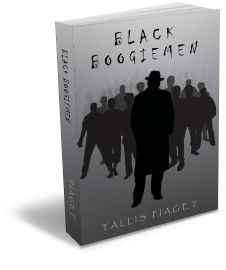
BLACK BOOGIEMEN follows Dr. Trenton Branch, a scientist whose extremely meager upbringing came from his grandmother and the cruel inner city streets. He grows to become a world renowned biochemist, living in one of the wealthiest suburbs in the country. One miserable day while visiting his old neighborhood a calamity occurs; this incites the rage of a rabid pit bull within Dr. Branch. He then unites a group of men, waging war against the inner city in an attempt to excise all of its demons.
Sparking what some called the “Civil War of 2020” this controversial story touches on all of the untold secrets of black America, while providing a fast paced, page turning tale of violence and knowledge. With graphic imagery and heart pounding action this book is sure to leave the reader wanting more.
Links
Web page Facebook
Twitter: Tallis Piaget @blackboogiemen AmazonBarnes and NobleGoodreads
Published on September 24, 2012 22:16
September 22, 2012
Tips: Fun Family Writing Exercises
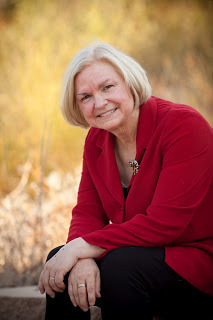 Joyce T. Strand, Editor
Joyce T. Strand, EditorStrands Simply Tips
Author, ON MESSAGE & OPEN MEETINGSIn response to those of you who have asked for some additional “Fun Family” writing exercises, following are some new suggestions.
As I have said before: writing can be fun and even therapeutic. Not only can writing itself be fun, but learning to write provides an opportunity for family entertainment.
Beyond the cryptic tweet and text, we write an e-mail in search of a job, a carefully composed apology to make up for a mistake, or a message at work to help do our job. Most important, communicating with one another continues to be the base of a relationship. Writing can be a valuable way to reach out to one another.
So it makes sense to hone our writing skills.
At the same time, in this accelerated world, family members are preoccupied with their individual activities –Mom and Dad with their jobs and with maintaining a comfortable dwelling for the family, and kids with school, sports, band, debate club, and, of course, their chores. Sometimes we have time to read a book, but seldom do we have time to practice our writing skills. Frequently we find writing to be a drudgery and avoid it, basking in the brevity of social media.
So that’s why I’ve developed a series of Fun Family writing exercises. You can view some of my earlier suggestions by clicking on the Fun Family tab above. Here are some new exercises:
· Each member of the family to write a paragraph describing what you do when you return from school, work, the supermarket, or wherever. Do you have a ritual? Do you throw your backpack on the floor? Do you get something to eat? Do you change your clothes? Then everyone is to print out your paragraph – assuming you’ve written it on your computer – and put it into a pile and choose an alternative to read aloud to the entire family. If you’ve handwritten it, be sure it’s legible. See if your family can guess which is yours. You might be surprised at their reactions!· Write a paragraph about what happens in the morning getting ready for work (that includes homemakers) or school or writing a book etc. How many bathrooms do you have? Do you get up immediately when the alarm or mom calls? Do you run late? Read your paragraph aloud to the family. Be kind to your siblings!· Write a page or more of dialogue based on your family at dinner. Read it aloud at the next family dinner. Take turns. It might be interesting to see if your conversations improve or decline. · Write a paragraph describing your favorite Super Hero without naming him. All family members to put their paragraphs into a pile. Draw one out that’s not yours and read it aloud. See if family can guess who it is. (Do not read your own, because your family will most likely know who your favorite hero is.)

· Write about: A boy enters a room with his sister. Assign a paragraph to each family member. Do not share your paragraphs until everyone is finished. Then read them in the following order: o Write a paragraph to describe the room: is it a jail, a hotel, exercise room, bedroom? Small? Large? Does it smell fragrant or pungent? What kind of furniture does it have? Is it a restaurant? Bar? Is it humid or dry?o A second family member to write a paragraph to describe the boy: physical description, clothes, approximate age. Is he lean, sweaty, out of breath? Is he wearing shoes or is he barefoot? o A third family member to describe the sister. Is she taller than her brother? What color is her hair? Does she look like a sister? Is she dressed stylishly? Is she sweaty and out-of-breath?o A fourth family member describes the action of entering the room: did the two run into the room? Did they appear frightened, worried, secretive, happy? Did they both appear the same as they entered the room? o If there are still other family members, write dialogue between the brother and sister. The brother wants to do something. The sister disagrees. The brother convinces her. They do the task and leave.o Additional family members can choose any of the above to write.o When you have all finished your paragraphs, read them aloud to the entire family in order. It should be an interesting story.
If you have other ideas for Fun Family writing exercises, please leave them as a comment so that we can all share them. I hope you agree writing itself is fun, and learning to write can provide an opportunity for family entertainment.
·
Published on September 22, 2012 15:08
September 21, 2012
What the Experts Say: Fiction Fantasy Author Tracy Kauffman on Writing for Children
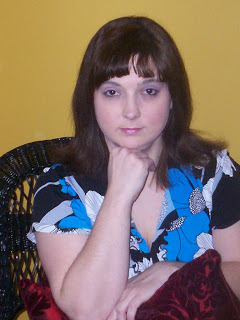 Tracy Kauffman, Author
Tracy Kauffman, AuthorGWENDOLYN'S WISH
Fiction fantasy author Tracy Kauffman has written GWENDOLYN’S WISH, a children’s book about a young girl who receives a special parrot that can grant wishes. She loves writing for children and young adults. She stopped by to give us some tips on the special requirements of writing for children.
Writing For Children by Tracy Kauffman
There should be a distinct difference in writing for Children than Adults, because of the subject matter. Children are not capable of understanding the same things as an adult would.
A theme, topic, or focus is much different for children, because their ability to grasp material and their awareness to data is much more limited than someone much older. A child’s communication and intellectual skills require memory, understanding and concentration. It is harder for a child with a small attention span to be able to sit down and read a story than a child with a longer one.
Secondly children have to be able to reason and separate what they have read, understand the difference in what is fiction or fantasy.
Next children have to understand vocabulary and understand descriptive language that is talked about in the story.
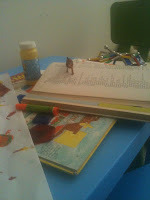
Last of all, children have to be able to develop their own ideas of what they are reading, from things that they have learned about in the past. You would not talk about a complex topic to a small child that has no possible understanding of the subject.
To be able to write or teach a young child, you have to be able to get down to their level of thinking by considering their intellectual development or understanding capabilities. This can be done by · repetition of words,· simple sentences vs. complex sentences and · the use of pictures for descriptive purposes.
About Tracy Kauffman
Tracy Kauffman is a Fiction Fantasy author from North Alabama. She is married and has two children. She graduated Calhoun College with an associates degree in Applied Science. She loves writing stories for children and young adults. She works part time at a nursing home with some fantastic elderly folks who inspire her. She loves hearing their interesting stories and often jokes that she has several mothers and fathers there. She started writing short stories and poetry when she was a teenager. She wants to help bring joy to the world today by her books. As an author, she wants to write books that will edify, encourage and be decent for children and young adults.
LINKS
Website: http://tracykauffman.yolasite.com
GWENDOLYN’S WISH is available at
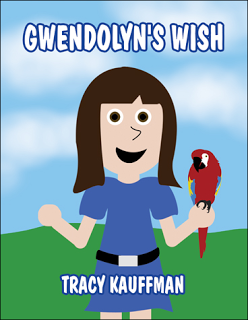 Amazon in soft cover and Kindle E-book format Also available in Nook
Kobo
Amazon in soft cover and Kindle E-book format Also available in Nook
Kobo
Goodreads
Twitter: @KauffmanTracy
Published on September 21, 2012 16:03
September 12, 2012
SPECIAL INTERVIEW: Finalist - Best Indie Book - Tina R. Boscha
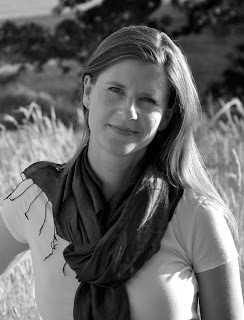 Tina R. Boscha, Author
Tina R. Boscha, AuthorRIVER IN THE SEA
Welcome, Tina. I am so pleased to be speaking with a finalist in Kindle Book Review's Best Indie Book Awards for Literary Fiction. Your book RIVER IN THE SEA is very special – you vividly and compassionately portray one girl reaching adulthood in The Netherlands during WWII when everything she believes about family, friendship, and loyalty is questioned by war. I found it compelling and very real.
Q First, can you tell us what inspired you to write about a teenage girl in The Netherlands during WWII?
This is my family history. While I certainly embellished, changed, truncated, etc., this story is heavily based on true events. Leen De Graaf is my mother’s birth name and Leen is very much… Leen. From a writer’s standpoint, I always believed it would make good fiction – once I figured out how to do it, which took some doing.
But beyond that, I think there’s a universality to the story that was really attractive to me. I think each of us, especially during our youth, feels this push/pull of what you should do versus what you think is right, of learning that the world is miles from black and white, and that all the ambiguity of life is both beautiful and incredibly terrifying.
I’m also incredibly proud of my heritage. Most WWII fiction doesn’t take place in the Netherlands, and very few are aware of Friesland and its rich cultural history. Frisians are a very old, distinct ethnic group and I’ve always believed its uniqueness deserved a story. Put it all together, and there was no way I couldn’t write this book.
Q The back story of German occupation and life in an occupied country are critical to your story. How did you apply your research/background information to make your story so credible?
I am so incredibly lucky in that my parents, now 80 years young, took us to Friesland several times during my childhood. Their childhood homes are where much of the story took place, so I had pictures and my own memories to provide a sense of setting. As a kid, I grew up listening to terrific, bizarre, and sometimes horrifying stories of what they experienced during WWII, stories of young men hiding in hollowed-out potato heaps and the villagers pouring milk into the canal rather than giving it up to raiding soldiers. I think those stories seared onto my synapses at a young age.
I have to give a lot of credit to my father. While RIVER IN THE SEA is based on my incredible mother and her family history, my dad remembered detail upon detail that you just don’t find in any history book. For example, there is a scene where a young woman’s clothes are stained with daffodil pollen that came straight from him. He told me about fueling lamps with diesel fuel and what the soldier’s uniforms looked like, all those details you need to bring that time to life.
Besides my parents, I relied on the good old Internet for WWII dates and important names. Otherwise, I tried to keep it very focused on the domestic.

Q How do you build your characters? Especially Leen is very engaging – a 15-year old experiencing harsh circumstances as she is growing into adulthood. Her reactions to events are very real – and very much like a teenager’s.
That is a very good, and very tough, question. And, thank you! I am very motivated by plot and “moments” – key scenes where the drama is ramped up. So I don’t start with character. This has the unfortunate effect of increasing my writer’s self-doubt. I have learned, though, to trust revision. When I first draft, I feel very distant from the characters, as I’m just trying to get words on the page and move to the next piece. The important key is, though, to keep writing! However, by the end of the draft, I am usually crying as I write the important moments. I think what I’m saying is that I get to know the characters as I write, and then in revision, I try to invest more in the characters since the plot is usually laid out. I try to mentally step into his or her shoes and feel the physical sensations, the emotions, think those thoughts, so that the voice feels organic. It’s hard to describe but I feel like I get up out of Tina and sit back down in the character. Perhaps it’s a bit like method acting (although trust me, there will be no acting in my future).
I very much wanted Leen to be a teenager. Impulsive, vulnerable, sometimes shy, sometimes outspoken. It probably didn’t hurt that my stepdaughters were in varying stages of adolescence when I was revising!
Q Who are your targeted readers and what are they looking for? I find your book very compelling – although I am in the, let’s say, over 50 women’s category. Yet I suspect if someone reads that the book is about a “coming of age” 15-year-old girl during WWII in The Netherlands they might dismiss it as a story for teenagers.
Excellent question! This has been a toughie for me, as I feel like this book could be YA and could be straight literary and then it could be historical. That makes the target reader anyone from 16 to 99! But it’s a wonderful “problem” to have, really. I know of young women who identify with Leen, as well as more mature readers who return to their teen years and identify with what Leen went through. We’ve all had to come of age at some point, which is why so much teen fiction and literature resonates with readers of all ages.
That said, I think I have had the strongest reaction from older readers. I’ve had women in their 60s email me about the story, about experiencing those emotions, of feeling caught between pursuing their own authentic selves and the expectations their world had for them.
Q When you’re not writing or teaching, what do you do? Hobbies? Sailing? Knitting? Standup comedy? Favorite music? Favorite authors?
I am a serial monogamist when it comes to hobbies, although a few have stuck with me. The latest: running. Before summer began, I had spent a year so incredibly busy (and rewarding) that I didn’t exercise much beyond walking my dogs – which, by the way, is something I spend considerable time on, and one that I am pretty sure keeps me sane. And then, for some reason I still can’t pinpoint, I thought, I want to run. This comes after years of hating it and never doing it beyond an occasional five minute spurt here and there. I just ran my first 5k and am just starting the training for a 10k.
Another new-to-me obsession is stand-up paddle boarding. It’s something I do by myself, with my husband, friends and family… Anyone I can get on a board! Living in Oregon provides ample beautiful lakes and rivers to explore, and there’s nothing like gliding over water and taking it all in.
Craft-wise, I’ve been sewing for about four years now, and I love to make my own clothes. I’m about to tackle making my own jeans. Yes, jeans. I just ordered rivets!
Of course, there’s reading. I read everything from the Sookie Stackhouse books to Edith Wharton. My Kindle is on the fritz, though….
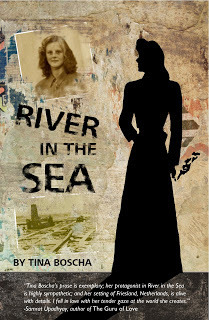
RIVER IN THE SEA
At fifteen, Leen De Graaf likes everything she shouldn’t: smoking cigarettes, wearing red lipstick, driving illegally, and working in the fields. It seems the only thing she shares with her fellow Dutchmen is a fear of the German soldiers stationed nearby and a frantic wish for the war to end. When a soldier’s dog runs in front of Leen’s truck, her split decision sets off a storm of events that pitches her family against the German forces when they are most desperate – and fierce. Leen tries to hold her family together, but despite her efforts, bit by bit everything falls apart, and just when Leen experiences a horrific loss, she must make a decision that could forever brand her a traitor, yet finally allow her to live as her heart desires.
Tina R. Boscha
Tina R. Boscha grew up in Wisconsin, a second-generation daughter of Frisian immigrants. She holds a BA and an MA in Sociology and earned an MFA in 2002 from the University of Oregon’s Creative Writing Program, where she also served on the editorial board of The Northwest Review. She is a recipient of the Leslie Bradshaw Fellowship from Oregon Literary Arts, and in April 2007 received a research and living expenses grant from the University of Oregon's Center for the Study of Women in Society to support the completion of her novel. A chapter of River in the Sea, “Fernedering,” appeared in The Portland Review and was nominated for a Pushcart Prize and also to the 2004 Best New Writers In America anthology. Her short fiction has appeared in the Colorado Review and other small literary journals. In August 2011, she self-published her novel, River in the Sea as both an ebook and paperback.
Presently, Tina divides her time among numerous pursuits, including teaching composition at the University of Oregon and at Lane Community College. She is represented by Curtis Russell of PS Literary.
LINKS
Blog/web site: www.tinaboscha.comAmazon purchase link: http://www.amazon.com/dp/B005JM04K0/ref=cm_sw_r_fa_dp_eg-wob0M17CAWPrint purchase link: http://www.amazon.com/River-Sea-Tina-Boscha/dp/1466292075/Twitter: @TinaBoscha
Join Tina Boscha and 9 other award-winning authors in the BEST INDIE BOOK FESTIVAL,
Featuring 10 Literary Fiction & Thriller Titles!
TWO DAYS ONLY!
Tues. Sept. 18-Wed., Sept. 19th.
10 Award winning books and SEVERAL chances to win a$10, $20, or $50 Amazon gift card (3 lucky WINNERSwill be chosen!)
Click the image below for details
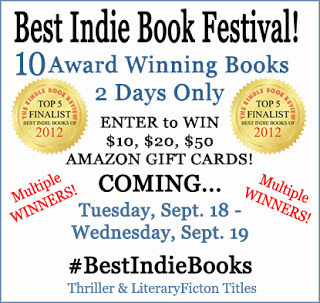
Published on September 12, 2012 22:07
September 7, 2012
What the Experts Say: Sci-fi/Suspense/Thriller Author, Ahmad Taylor
 Ahmad Taylor, Author
Ahmad Taylor, AuthorDARK SIDE OF THE MOON
Ahmad Taylor, a 36 year old writer from Brooklyn, N.Y., is a former NYC police officer turned author. His debut Sci-fi/Suspense/Thriller DARK SIDE OF THE MOON has reached the best seller list in multiple categories on Amazon.com more than once, and is a semifinalist in The Kindle Book Review’s Best Indie Books of 2012 contest for Mystery/Thrillers.
Q Thank you for stopping by today to talk about your experiences as an author, your book, and maybe a few tips for our readers. Before you continue, can you describe the plot of DARK SIDE OF THE MOON?
Sure! When former government agent, Derrick Thomas, awakens to find his family missing and in danger, he must outwit a clandestine organization intent on keeping him from the truth and his family.
Government agent Derrick Thomas awakes from a disturbing dream to find a message from his father asking for help. As he sets out to lend his assistance he quickly discovers that not only can he not find his father, but that a clandestine government agency is out to derail his search before it can even begin. After discovering details of a global food crisis, an interplanetary mission gone awry, the murders of two of his father’s colleagues, and the further disappearances of his mother and sister, Derrick is thrust into a fight for his own life and a struggle to uncover details of secret government experiments which his family may be involved with. Will he be able to save them and uncover the truth before he becomes the next victim of an organization bent on keeping him silent?
Q Your readers called your book a “real page-turner.” How do you build suspense?
When writing I try and imagine the story as a movie in my mind. I try and imagine how it would look visually and then I think about what I would want to see, were I watching this story.
I build my stories by sections, each section containing a major plot point in the story. Within in each section, I create chapters that have specific situations or circumstances that gradually build upon each other until they culminate in the section’s climax.
I made it a point of contention that when I am creating a story, I do not want to spoon feed the reader a beginning, middle and end to the story. I think it is too simplistic and I do not like to read or watch stories that treat me as if I need to have my hand held the whole way through the story. I often jump timelines within my writing to provide a backstory, without making it so linear that it becomes boring and predictable.
Limiting predictability is crucial to me in creating something that has suspense and keeps the reader guessing.
Q How do you use your law enforcement and security background when writing?
My law enforcement and security background were a great aid in creating the Thomas family as they are all current or former government agents. I was able to take my specific knowledge of that field and incorporate it into my story to make the characters and their actions more plausible and realistic.
Q What do you do to make your characters compelling and engaging?
In developing my characters I try and ensure that I not only express their good qualities, but also explore their flaws with the reader, to show that even the most heroic of characters is not perfectly whole.
In this way I try and ensure that the reader can associate with the main characters and understand the actions that they take, even the extreme actions I portray in my stories.
Q Are any of your characters based on a real person? Can you tell us?
The main characters in DARK SIDE OF THE MOON (Derrick, Jeanie, Martin and Susan) are based on members of my family.
This makes the story very personal to me, and helped me create characters with true depth due to realistic flaws. My family doesn’t necessarily agree to their flaws, but I told them that I was just using poetic license with that part of the character development.
Q Why did you decide to become an author? When did you first realize you wanted to be a writer? What would you say is the strongest motivation for making you a writer?
I have always had a passion for telling stories and creating fiction (just ask my mom the stories I would tell her when my report cards would get “lost”).
I started writing poetry in my teens, and took a few courses in college. I had one poem published in a poetry anthology years ago and after that I knew in the back of my mind I wanted to write.
I took several literature classes in college and each gave me more inspiration than the last. I was drawn to Edgar Allen Poe and the way he was able to take the mundane and make it mysterious and diabolical. I also studied Shakespeare and once wrote a 60-page combined appropriation of King Lear, The Tempest and Romeo and Juliet. I only got a B+ on the play, mainly because my professor asked for 5-7 pages and I went a bit overboard.
Q Favorites: author, character, movie, celebrity, city
Author: All-time: Poe and Shakespeare equally. Poetry: Emily Dickenson.
Character: Keyser Soze (The Usual Suspects) and John Keating (Dead Poets Society)
Movie: I have a ton a “favorites” but a few are: The Usual Suspects, Dead Poets Society, Godfather II, Bring It On, The Bourne Identity series, The Matrix, The Adjustment Bureau, Love Actually, and How to Kill Your Neighbor’s Dog to name a few.
Celebrity: I don’t follow celebrities like that, no TMZ for me, but if I could hang out with someone for the day it would probably be; Will Smith or Will Farrell. Female: Sarah Michelle Gellar, Paula Patton or Blake Lively (yes, I’m hoping they come across this interview and give me a call).
City: NYC will always be home to me, no matter where in the world I end up.
Q What do you like to do in your non-work, aka, spare time?
In theory I write with any and all of my spare time. But in reality, I love watching movies and sports, and the weekend beverage with my compatriots.
Q Are there any other genres you can imagine yourself writing in?
I don’t think I am going to write any one specific genre exclusively for my career. I like to read and watch all genres and I would like to write in them all as well. The toughest but most exciting would be comedy. I have always dreamt of doing comedic writing so when I eventually tackle that it will be exciting and fun for me.
Q What are you working on now? When can we expect to see your next novel? Will it be in the same genre?
I am currently working on the sequel to DSOM.Everyone wants to know when it will be out. I can only say super-duper soon!
Q Anything else you’d like to add?
I would like to thank Joyce and her readers for indulging me and allowing me to share a bit about myself and my work.
I would like to implore your readership to do their favorite writers the favor and courtesy of writing reviews for them. It may seem cumbersome, but it really only takes 5 minutes at the most, and the benefits that authors receive from these reviews are innumerous. Not only are reviews great for the author’s self-esteem, which helps them write better, but it also helps their ratings and rankings, which means that they get more exposure and the more exposure your favorite author receives, the better chance they have of sticking around to create more for you to enjoy. So take a few minutes to say something positive about their work and help keep them doing what they love to do best, entertain you.
Thanks again Joyce for the opportunity.
Q I second this request to write reviews. They are very helpful in all the ways you mention. Also, they help us authors comprehend readers’ perspectives. Great final point. Thanks for your input.

Links
@AhmadDarkside
Darkside Blog
AhmadTaylor.com
E-book
Goodreads
Paper Back
Published on September 07, 2012 10:55
August 30, 2012
What the Experts Say: Contemporary Fiction Author - Raynetta J Stocks
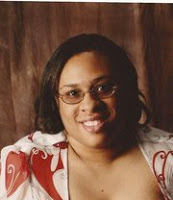 Raynetta J Stocks, Author
Raynetta J Stocks, AuthorTHE GRIM Please welcome Raynetta J Stocks. Raynetta is a budding contemporary fiction author whose debut novel, THE GRIM, opened to rave reviews. Having written since childhood, Raynetta’s work consists of plays, short stories, prose anthologies, and editorial essays. When a severe bout with congestive heart failure forced her to discontinue her longstanding work in mental health, she decided to pursue her writing career full-time. She now resides in Maryland with her son.
Q What led you to write THE GRIMspecifically?
THE GRIM in a lot of ways was my own story. My main character, Jaycee, and I had a lot in common in that we shared similar fears and traumas. When I set out to write this book, it was meant to be a Gothika-like tale of intrigue and mystery. Instead, I found I was pulling from a darkness in me I thought previously extinguished. It was therapy, for me and Jaycee.
Q How do you use back story to drive the plot? For example, how did you use PTSD symptoms to write a compelling novel?
PTSD is an acronym for post-traumatic stress disorder and is a clinically recognized mental health illness dealing with individuals who struggle to live normal lives in the wake of disturbing events. The condition typically affects individuals with serious traumatic events in their past: the sexually and physically abused (many of them children), murder witnesses, victims of long illnesses or cancers, and most notoriously war veterans.
Jaycee is diagnosed with PTSD after she kills her abusive ex during an incident she cannot remember. Instead of being sentenced to prison, the judge takes pity on her and sends her to a psychiatric facility to face her demons. So, in Jaycee’s case, her backstory is crucial to recalling these repressed memories. It is what has happened prior in Jaycee’s life that the reader is drawn to, the mystery of what occurred to land her in this facility surrounded by other mentally ill patients. Much of the story are therapy sessions with her new doctor recounting parts of her past and what led her to the event in question.
Q What do you believe is most important about THE GRIM? About your other writings?
Innately, THE GRIM is about survival. Many people believe that if you bury what is dark and ugly about yourself or your life that it will remain there forever. What Jaycee, and many people like her, come to find is that nothing ever stays hidden. And a lot of those things we seek to forget or bury have truly affected us, our lives, and the lives of those who love us. Only by digging them up and dealing with that trauma do we triumph over what sought to oppress us.
Q Who are your target readers?
THE GRIM is an “anybody” kind of story, but as the main character is a young woman in her mid-twenties, I would say women between the ages of 16-40 would probably identify more readily.
Q Actually I would expand that to older readers as well. As someone over 40, I am very intrigued with THE GRIM.
Q What is key to developing characters that readers care about? How do you make your characters engaging? Are they based on real people? How do you make them credible?
As a writer, you have to care about what you’re writing. When you’re passionate about something, it shows in the work. Engaging characters, to me, are characters with stories never before told. I like to put a creative spin on the mundane or shock with stories the reader may not have ever experienced. Some of my characters do have basis on real people; as I’ve said, Jaycee in THE GRIM is quite of bit of me and my experiences. A character’s credibility is rooted in the writer’s ability to make that character respond in a human way, even if that character is somehow supernatural or of another world. It is the reader’s ability to identify with what’s on the page that makes them keep turning.
Q Why are you a writer?
I am a writer because I am an avid reader with a love for good stories. When you’ve experienced so many great stories, one’s imagination becomes teeming with stories of one’s own. A quote that I love from Toni Morrison is “If there is a book you want to read but hasn’t been written, you must write it.”
Q What’s most important about dialogue?
Dialogue is about natural human speech. Conversations must flow as though real people are saying them. It helps solidify the validity of the characters. I often read my dialogue aloud, either to myself or with someone else, when available, to see if it sounds like a real conversation.
Q What activities do you do for inspiration to write?
I’m inspired by life. I people watch, especially when I’m in new or interesting environments. Intriguing stories are about putting ordinary people in extraordinary circumstances or vice versa. That happens daily in the world; you just have to be able to recognize it.
Q Does writing relax you or stress you out?
Writing is always relaxing. What makes writing stressful are deadlines, which I hate. Nothing good comes from forcing the Muses.
Q Do you have any kind of routine – or muse – to write your novels?
I do not necessarily have a routine. But I feel my Muses respond best in quiet environments with little to nothing else going on. I need to be able to see my world clearly in my mind’s eye so that I can describe the movie playing out in my head.
Q Who is your favorite author? Book? Character?
Tough questions! My favorite author would most likely be Terry McMillan [Disappearing Acts, Waiting to Exhale]; I’ve read and own more of her books than any other author. She has a real way of portraying the single black woman experience. My favorite book is definitely The Color Purple by Alice Walker. It reminds me that genuineness of spirit creates a true richness in life, despite what may feel like insurmountable adversity. My favorite character would probably be Milo from The Phantom Tollbooth. He is the quintessential kid: unable to appreciate the proper use of words, mathematics, or simple common sense until he’s faced with a world without it.
LINKS
· Website: http://www.raynettastocks.com· Blog: http://blog.raynettastocks.com· Facebook page: http://www.facebook.com/raynettastocks· Twitter: @RaynettaStocks· Goodreads: http://www.goodreads.com/RaynettaStocks· Purchase links: http://www.raynettastocks.com/p/my-books.html· http://www.youtube.com/watch?v=uX-Cs-5ZYK0
Published on August 30, 2012 19:09
August 17, 2012
How to Write an "Entertaining" Book that Delivers a Message: Who is Oscar Wilde and Why does He Matter? By Paulette Mahurin
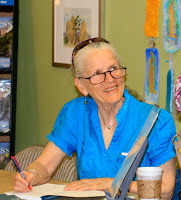 Paulette Mahurin, Author
Paulette Mahurin, AuthorThe Persecution of Mildred Dunlap
I am honored that Joyce Stand has allowed me to come here and say a few words, especially on a topic for which I have much passion -- two topics actually, creating an entertaining read and Oscar Wilde. The question for me then is how do I entertain you, the reader right here, right now? I hope I succeed.
Who among us would want to be prevented from loving? From intimacy, from the one we love? Then why do so many voices want to enter a discussion that make it impossible for another, to lay with their beloved in safety, unafraid of persecution, or worse, imprisonment or death. Who would dare hold to his/her passion and risk this?
And, yet we read books daily by the millions with stories of these loves -- tragic, agonizing, unrequited-- and we fixate on the page, imagining this fantasy world out there. We point fingers out there, and yet sit down with a book and in the safety of our imagination go to places beyond our beliefs. This is what books do, they allow us to venture out of our collective boxes and entertain the possible, in the fantasy. We are entertained by our own human desires, hooked by the chemistry words create that set in motion images of what it must be like if only…
As a writer, it is not difficult to understand what entertains, in light of seeing the human condition, and what has drawn us to stories for centuries.
Around the world, there are a multitude of things that entertain us as a society, the celebrity, the infamous, the rich, the utterly destitute, a poignant love story, devastation, the unbelievable, ad nausea. My story, The Persecution of Mildred Dunlap, startedfrom a photo I had seen of two women standing closely together dressed in turn of the twentieth century garb. They jumped off the page as lesbians, which seeded the story of a lesbian couple on the frontier, fearful of being found out.
In researching that time period, I hit pay dirt when I came across the imprisonment of Oscar Wilde in Britain in 1895. Now, I have the sensationalism to thread my story, hold interest, and hopefully entertain.
Here, I will take the liberty of quote from the prologue of my book:
Telegraphs clacked around the world with the breaking news of the conviction of Oscar Wilde. Mr. Wilde, noted celebrity and one of the most successful playwrights, novelists, poets, and short story writers, suffered a stunning defeat when he was sentenced to two years of hard labor in prison after being convicted for “gross indecency.” Wilde’s case, one of the first tried under Britain’s recently passed Criminal Law Amendment Act, criminalized sexual activity between members of the same sex, thus changing people’s attitudes about homosexuality from a mood of pity and tolerance to hatred and abuse.
The unofficial buzz in the tabloids was that Wilde was caught in the act with another male, Lord Douglas, the son of the Marquis of Queensberry, and Victorian London would have none of it. The news of trial and conviction spread fast and furiously to towns large and small around the world, exactly the kind of news story Red River Pass, a small town in Nevada, relished.
Oscar Wilde was the first celebrity tried and convicted under Britain’s recently changed law to make sex between men, indecency, a criminal offense, with a prison sentence of hard labor for two years. Where telegraphs existed in the world in 1895, the news of his imprisonment became known. It was this news that changed views on homosexuality from that of an attitude of observed conservative tolerance to outward hostility and abuse. There was an article in the New York Times, April 1895, Oscar Wilde’s importance is not just as one of the most prolific literary figures of our time but as a lightening-rod scape goat for unleashed hatred, that the ignorant can not see lives in their own hearts. I would like to close my wonderful visit here with an excerpt from Oscar Wilde’s De Profoundis, a letter he wrote to his lover while imprisoned. It is what inspired my writing The Persecution of Mildred Dunlap.
When first I was put into prison some people advised me to try and forget who I was. It was ruinous advice. It is only by realizing what I am that I have found comfort of any kind. Now I am advised by others to try on my release to forget that I have ever been in a prison at all. I know that would be equally fatal. It would mean that I would always be haunted by an intolerable sense of disgrace, and that those things that are meant for me as much as for anybody else – the beauty of the sun and moon, the pageant of the seasons, the music of daybreak and the silence of great nights, the rain falling through the leaves, or the dew creeping over the grass and making it silver – would all be tainted for me, and lose their healing power, and their power of communicating joy. To regret one's own experiences is to arrest one's own development. To deny one's own experiences is to put a lie into the lips of one's own life. It is no less than a denial of the soul.
More on Paulette MahurinPaulette Mahurin is a Nurse Practitioner (NP), specializing in Women's Health in a rural clinic in Ojai, CA., where she lives with her husband Terry (a retired NASA attorney) and her two dogs Max & Bella (rescued from kill shelters). She has taught nursing in several college level programs, including preceptorships for UCLA and USC's NP programs in the emergency room (ER). She worked as an NP in the second busiest ER in Los Angeles County, with the highest census in child abuse. Her current novel, The Persecution of Mildred Dunlap, draws on her work in the ER to connect the reader with an emotional authenticity about prejudice, abuse, violation of body and soul, as well as the loving compassion of friendships and supportive relationships.
When Mahurin isn't writing, she is an advocate of tolerance, women's rights, and an animal activist, who spends a great deal of time doing pro bono work for women in her community along with rescuing dogs. The profits from her novel go to SPARC, the first no-kill animal shelter in Ventura County, CA. Links Amazon:http://www.amazon.com/Persecution-Mil...
Blog: http://thepersecutionofmildreddunlap.wordpress.com/
Facebook: https://www.facebook.com/ThePersecutionOfMildredDunlap
Goodreads: http://www.goodreads.com/book/show/14061559-the-persecution-of-mildred-dunlap
SPARC: http://www.santapaulaarc.org/ https://www.facebook.com/santapaulaarc (their fb page shows a post on our affiliation)
Published on August 17, 2012 19:37



